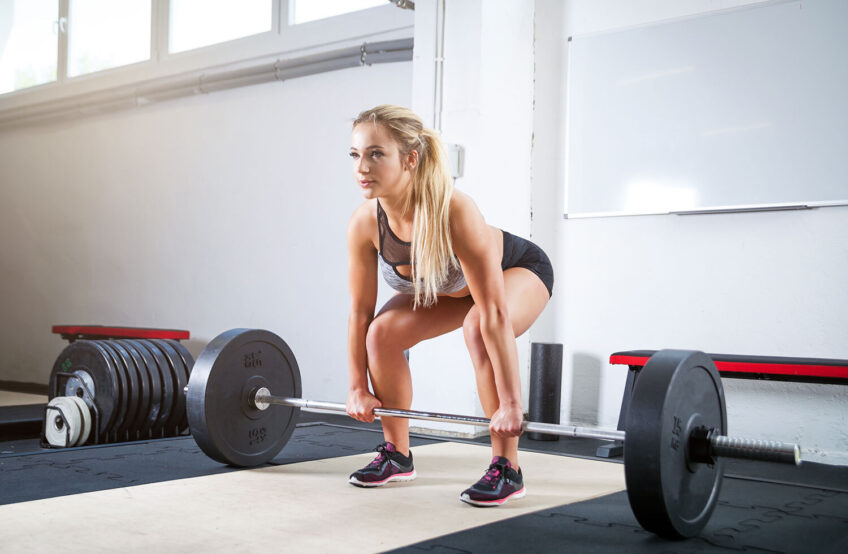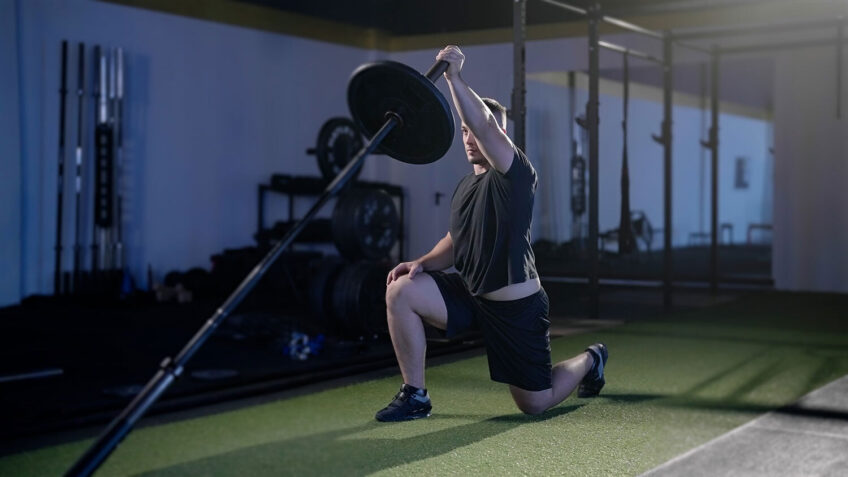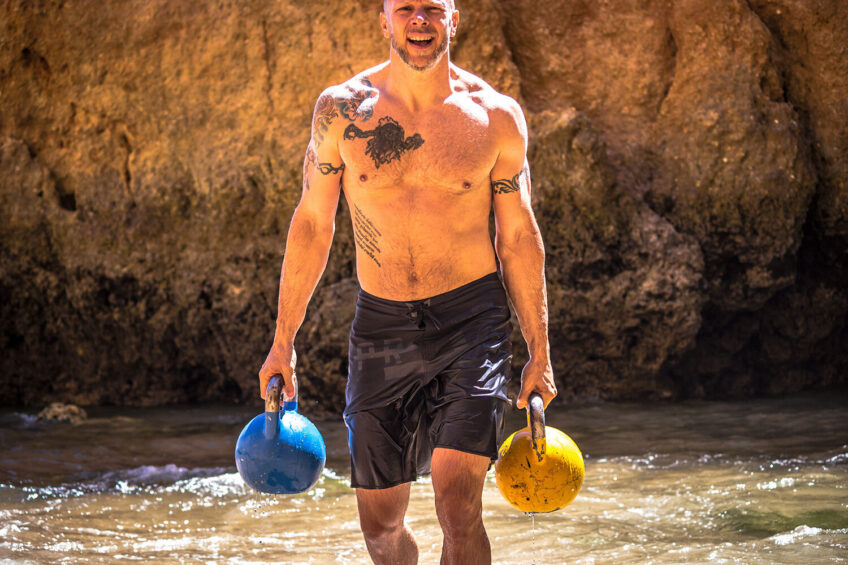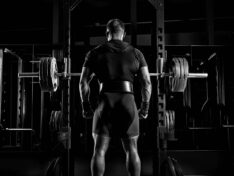Best Core Exercises For Power
Core muscles are critical to your overall strength and continued progress in the gym. These vital muscles stabilize and protect your body.

When I started lifting back in my late teens, I used to train my vanity muscles three times a week (biceps, shoulders, triceps). I rarely put as much effort into my core or legs. After I exhausted my beginner gains, I became frustrated at my lack of progress.
When I had finally had enough, I contacted one of my more experienced gym friends and asked for his advice. He had tried to give it to me on several occasions but had backed off when I was unresponsive.
Luckily, he has a great heart and didn’t hold it against me. He asked me if I had been training my core. I told him I had and that I did lots of ab sessions. He smiled at me, amused, and gave me some exercises to do instead twice a week. I went away and followed his instructions, and It was miraculous; all of my lifts improved within one month. When I asked him why, he explained that training your entire core for power differs from training your six-pack to show on the beach.
Training your core is one of the most important things you can do to improve your power. Your core is all of the muscles in your torso, including the muscles at the front sides and back, and many that you cannot see.
Core training is essentially performing specific exercises that target these muscles. These muscles work as stabilizing muscles. Core muscles help the entire body in almost every movement-based function. The most known core muscles are the abdomen, but there are many more that we need to think about.
Your core is made up of the following muscles:
Inner Core:
- Diaphragm
- Pelvic Floor
- Multifidus (stabilizing muscles of the spine)
- Cervical Flexors
- Transverse Abdmominus
Outer Core:
- Abdominals
- Lats
- Spinal Erectors
- Glutes
- Quads
- Hip Flexors
To provide strength when lifting, your core muscles work with whatever muscle you are using to lift so that you can supply the strength and coordinated movement you need.
As your core muscles usually work in unison together, it is essential to train them as a group, as training one individually can cause over-development.
Training your core correctly will have the following benefits:
- Core improves almost every other athletic movement you do. If you run, you will run better, and if you lift, you get stronger.
- Core training improves your general fitness massively. By enhancing this fitness, you can perform better in almost every aspect of your life.
- Core training is essential for increasing power.
- Core training drastically reduces the risk of injury, especially in the lower back. The lower back receives a lot of stress and tension in everyday life.
- Strong core muscles ensure a good posture, reducing spinal strain.
- Training core regularly has been shown to reduce many health risks, and strong core muscles lower the chance of neck pain, strained ligaments, or ruptured disks.
- Core training makes you look good.
How Your Core Protects You
To understand your core training, you need to understand its function. The stabilizer muscles in your core protect your back by creating stiffness. This stiffness prevents your spine from moving too much in a harmful direction. These movements are extension, flexion, and rotation.
The core is crucial for strength exercises like squats and deadlifts; these muscles allow you to lift from a strong, secure, rigid position.
To improve your core, you need to let it do its job at the right weight. The best way to put a strain on your core in a healthy way is through standing exercises. Seated or lying exercises allow your body to cheat.
The key is to train your core in the movement planes we discussed above. As well as large compound core exercises, it can be beneficial to train your ancillary core. To make an effective core training program, we need to make sure that as well as big compound lifts, we also train:
Anti-Flexion
Anti-flexion exercises are when you resist a weight attempting to bring your spine into flexion. The best example of this is the deadlift. As you straighten up to lift the bar, the weight is trying to cause your back to curve and round, and this is where you have to put the work in to stop it.
Anti-Extension
Extension is the opposite of flexion. So, anti-extension exercises will require you to resist a weight trying to extend your back into an arch. An excellent example of this is the back squat.
Anti-Rotation
These exercises require you to resist something that wants to rotate your body. Any exercise done while holding a weight on only one side of the body is anti-rotation.
Now, I’m sure you have seen hundreds of exercise plans that promise to give you washboard abs, but this isn’t going to be one of those articles. These exercises are for those who want to increase their explosive power, speed, and force levels.
If you have seen a drop in your strength gains in the gym, these exercises may be the key that allows you to break your plateau.
Core Exercises
Here they are, the exercises that will give you a core of iron.
Compound Lifts – Squat/Deadlift/Bench Press/Overhead Press
First and foremost, the kings of training core are, in fact, the 4 compound lifts.
Although you probably don’t realize it when you do these exercises, they engage your core massively. In fact, by training these four exercises regularly, you will already have built a strong core.
I would advise that to begin with, if you do not already, focus on training these exercises in line with a good workout plan. Only once you stall should you start looking at incorporating the supporting ancillary exercises below into your routines.
Romanian Deadlifts
The best assistance exercise to the conventional deadlift, Romanian deadlifts are a tremendous anti-flexion core exercise. While performing these, ensure you do not round or arch your back; instead, keep your spine in a flat and neutral position.

On your lower body training days, add in 4 sets and see your deadlift improve drastically within weeks.
- Use a pronated grip to grab the barbell with a shoulder-width stance securely.
- Dumbbells are a great alternative and my preference.
- Lift your chest, drop your shoulder blades, and tuck into your neck.
- Allow the bar to drop towards the floor until tension is felt in the thighs and back, around knee height for most.
- Push heels into the floor and pull back on the knees while keeping a long spine.
- Rest when you get the bar back to your thighs.
Landmine Press
This full-body movement will engage your core. I love this exercise variation with a straight bar and a kneepad if needed. Get down on one knee and extend press your arm as tall as possible. Squeeze your glutes and contract your abs to lock your core around your ribcage.

When you are locked and secure, feel the stretch and your core. You should feel your back trying to lengthen and extend to make the exercise easier. Resist that. Do four sets of ten when training back and shoulders.
Farmer's Carry
Perhaps the most straightforward core exercise ever, yet one of the most effective. To do the farmer's walk (aka suitcase carry), grab your favorite dumbbells or one kettlebell in each hand. Now extend so you are as tall as possible.

Then, all you need to do is walk a set distance, do a 180, and walk back. This is also a great exercise to improve your grip. Do these on chest/tricep days.
Additional Tips
One thing that will help you with your core exercises is to concentrate on your breathing. You may never have thought about the impact that breathing has on your core, but it has a massive impact. Most people breathe by lifting their shoulders and lifting their ribs. This will force you to break the rigidness required during heavy exercises.
Practice breathing into your stomach, and picture your breath entering behind your belly button. Trust me, it works. Yoga core exercises are also an excellent way to work out your stabilizing muscles if you're not quite ready for power movements.
Final Thoughts?
To become powerful, you will have to work on your core. Like a mighty skyscraper, the most critical thing for stability is a strong foundation. Your core muscles are the foundation for your entire body. They protect you from injury, provide stability, and help you lift.
Please do not fall into the trap of ignoring your core during your training like I did. All that will happen is you will stall in your progress eventually, or perhaps even worse, you might injure yourselves.
By following the tips and exercises above, your progress in the gym should continue to improve.
Tony Lee, MS, RD
Tony Lee, RD, MS, is a highly qualified and accomplished Registered Dietitian with a Master’s Degree in Nutrition Sciences. Tony brings over two decades of experience in dietetics, specializing in sports nutrition. Interests include studying all aspects of wellness, fitness, genetics, and peak health performance.














